All about plastering OSB boards

Few people know that OSB slabs were invented in Canada, during the construction of frame-type houses. After some time, Russian specialists became interested in this technology. They began to use oriented strand board for exterior and interior cladding. But, despite the wooden texture, many people try to change the appearance of the plates, giving them an unusual decorative effect. One of these methods is plaster.
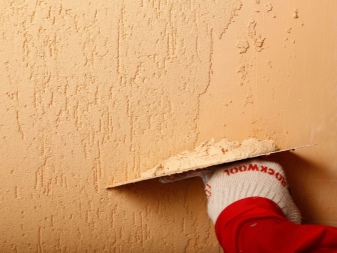

Peculiarities
OSB-plate is a multilayer building material made by recycling natural wood waste. Waste refers to wood shavings and fine chips held together by synthetic resins and wax.
A distinctive feature of OSB boards is strength, flexibility, heat and sound insulation.
Despite all these characteristics, it is impossible to leave OSB without a protective layer. Exposure to moisture negatively affects the material, it can swell, darken and even delaminate. To prevent this from happening, OSB boards are plastered, thereby protecting the material from negative factors. And after plastering, the surface can be decorated with any finishing material. This can be paint, wallpaper, decorative panels, siding, decorative stone and decorative plaster.

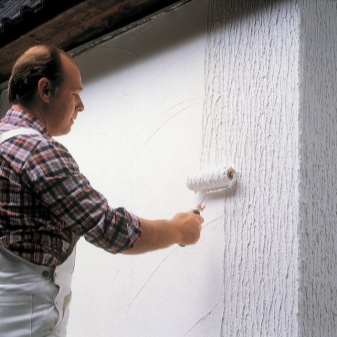
Many believe that even with a plaster layer, OSB can deteriorate. This opinion is wrong. In the presence of a protective layer, OSB sheets cease to be afraid of temperature changes, become moisture resistant, acquire additional mechanical strength. Using the plaster mixture, it will be possible to create additional noise and heat insulation, protect the panels, and most importantly, hide the connecting seams.


Compositions
Approximately 80% of the components of OSB boards are made of natural wood. That is why it is recommended to use mixtures intended only for wood processing. However, on the building materials market, you can find universal type putty mixtures.
Further, it is proposed to familiarize yourself with the list of compositions of putties intended for leveling OSB surfaces.
- Oil and adhesive composition. In such products, the base is an oil varnish. Linseed oil is present as an additional component. Supplement with other elements is possible.
- Adhesive composition. These are mixtures based on oils, glue and various plasticizers.
- Nitro putty. At the heart of the mixture presented are ether, resins, plasticizers and a little solvent.
- Plaster composition. The basis is gypsum. As additional elements - polymer additives.
- Compositions with latex. Such mixtures are much more expensive than the previously presented options. However, they are the most suitable for OSB coating of facade surfaces and interior decoration.



According to the information provided, it becomes clear that each individual type of putty has an individual composition. Accordingly, the characteristics and properties of the mixture change from the amount of certain components.
The general-purpose plasters mentioned earlier fall into several categories.
- Rough. This plaster is applied to the surface in a thick layer to hide all flaws.
- Decorative. Most often it is called the finish line.It is applied to the prepared walls with the thinnest layer, and only after the wallpaper is glued, the surface is painted or decorative plaster is applied.
- Special. Such universal mixtures are distinguished by heat-insulating, X-ray protective, moisture-proof and noise-suppressing parameters.


In no case can one ignore the fact that any plaster mixtures are divided according to the scope of application:
- plaster for interior decoration;
- plaster for exterior decoration;
- universal plaster.


By the way, the plaster mix for interior decoration is divided by texture:
- "Lamb" - in this case, the surface receives a fine-grained structure, due to the presence of small untreated stones in the composition;
- "Bark beetle" - the finished surface is somewhat reminiscent of a tree attacked by beetles;
- "fur coat" - embossed plaster with a smoothed surface resembling soft villi.
And yet, no matter who advises anything, experts recommend using formulations developed specifically for processing OSB plates.

Polymeric
Universal building plaster, the properties of which depend on the characteristics of the polymer used. If siloxane is present in the composition, it means that the surface will receive additional protection from exposure to a humid environment for up to 5 years.
Today, polymer plaster is available in 2 types:
- on a water-soluble basis;
- with organic solvents.
Of course, the cost of such plaster is quite high. However, performance guarantees a long service life.

Decorative
This plaster, after being applied to the OSB surface, creates a finished decorative layer that does not require further processing. You can use it for interior and exterior decoration.
Today, decorative plasters are divided into textured and structural mixtures, in the compositions of which fillers of different fractions are used. Accordingly, the final finish will depend on the type of plaster used. It can be "lamb", "bark beetle" or "fur coat", which were mentioned earlier.


Mineral
The binders of mineral plaster can be gypsum, lime, cement or clay. These natural fillers have many benefits. First of all, they protect the surface from the effects of a humid environment, let steam through, are not afraid of sudden changes in temperature, and are fireproof. Mineral plaster is also not afraid of ultraviolet light, it lends itself to restoration and has a reasonable price.
The only drawback is the lack of elasticity. If there is a railway nearby, vibrations will cause cracks on the surface of the walls or ceiling.


Elastic
A distinctive feature of the presented plaster can be seen in its name. It follows that under any loads and displacements of OSB-plates, the plaster will not crack, but simply stretch. This option is the best for new buildings that have not yet undergone shrinkage.
The advantages of elastic plaster are moisture protection, environmental friendliness, durability, ease of maintenance and the possibility of restoration. Disadvantages - instability to fire and anti-static.


Methods for applying plaster
When plastering OSB boards, many craftsmen face some difficulties:
- this material absorbs moisture present in the solution;
- due to the resulting moisture, the wooden base may crack;
- it is very difficult to achieve good adhesion of the compositions.
To cope with these problems, the master needs to determine which method of plastering is best to use.
- Traditional option. In this case, it is supposed to plaster the surface without using insulation.
- Plastering using insulation. Here we are talking about outdoor work using foam, bitumen cardboard or kraft paper.


Step-by-step instruction
Thanks to the modern possibilities of the building world, it is possible to plaster walls sheathed with OSB-plates, indoors, to decorate a house from the street. And due to the simplicity of applying the plaster mixture, you can carry out repair work with your own hands.
Before proceeding with plastering, it is necessary to prepare OSB-plates, remove dust and dirt from them.
It is preferable to use white spirit to get rid of difficult dirt. After cleaning, the surface must be primed and only then proceed to plastering the panels.

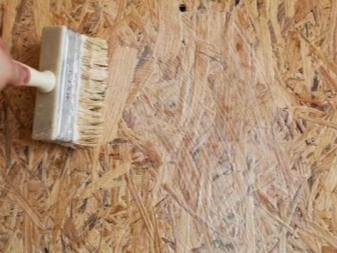
Work algorithm:
- putty is applied at the joints;
- vapor barrier is fixed on the plates;
- a layer of diluted glue is applied over the vapor barrier;
- a reinforcing mesh is laid on top of the glue;
- a day later, the thinnest layer of glue is applied to level the surface;
- the surface is treated with a primer;
- a finishing plaster layer is applied.

Outside the premises
For plastering OSB boards installed on the facade of a building, it is recommended to use the traditional method. Of course, it assumes the duration of preparation, since it is from the outside that the material is most exposed to the negative effects of a humid environment.
Surface preparation takes place in 3 stages:
- fixing moisture-proof materials;
- installation of a reinforcing mesh;
- primer.
When the primer is completely dry, you need to take a silicate or mineral plaster. The mortar should be applied in a thin layer no more than 5 mm thick. The finished surface can then be decorated.
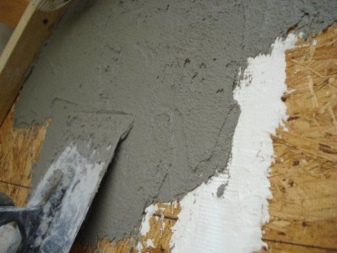

Home owners who have no desire to spend money on additional decor are encouraged to use the polymer composition of the plaster. Only the way it is applied involves a clear sequence of actions.
- Grinding. For this work, you will need coarse sandpaper. With its help, it is necessary to get rid of protruding elements and other surface imperfections.
- Primer. After sanding, the slabs are cleaned of dust and primed with a compound for wooden surfaces.
- Plastering. With gentle, but quick movements, the plaster mortar is applied to the primed boards.
The finished layer of polymer plaster does not require additional processing. However, if a desire arises, later it can be repainted.

Inside
The process of plastering walls indoors is divided into 2 stages - rough and finishing. Roughing means surface preparation, and finishing means applying a plaster layer.
Surface preparation should begin with sealing the joints. Ideally, use a silicone or acrylic sealant. Further work requires the use of sandpaper to get rid of unevenness on the surface. Next, the slabs are cleaned of dust and dirt, after which a primer is applied.
After the primer layer has dried, it is necessary to proceed with the putty. In this case, it is preferable to use an adhesive-based composition. Before its application, a metal or plastic mesh is fixed on the walls, which improves the adhesion of the mixture to the OSB base. After that, a putty layer is applied so that the mesh is completely hidden.
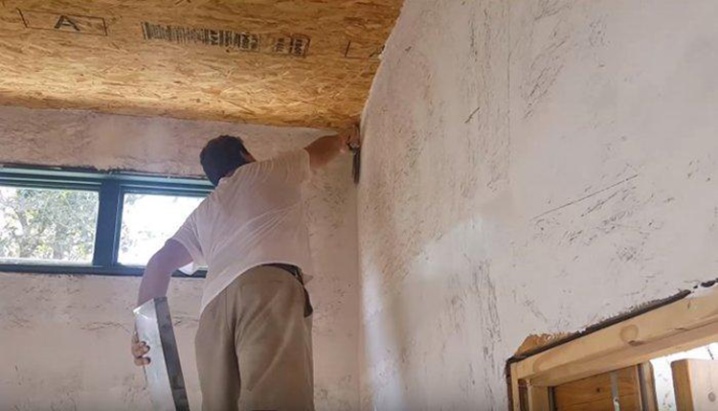
After the putty is dry, you can start decorative plastering. The selected mixture should be diluted according to the manufacturer's instructions. Then a flat trowel is taken and the mixture is gently applied to the surface in several layers.
The main thing is to make sure that the layer thickness does not exceed 5 mm. If layers are applied one after another, it is important that the previous one is completely dry.
For plastering OSB boards, see the following video.













The comment was sent successfully.